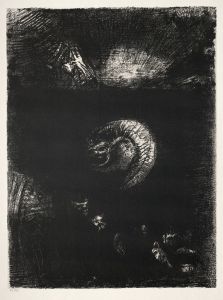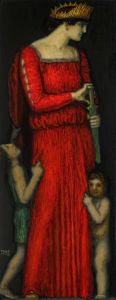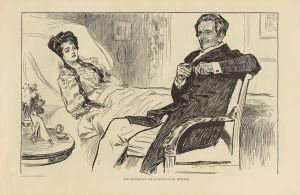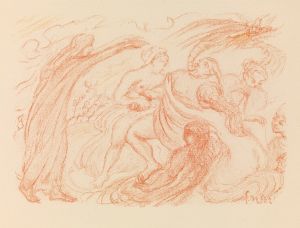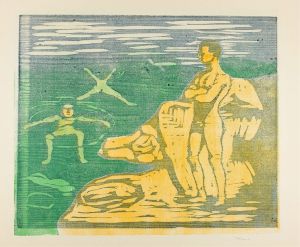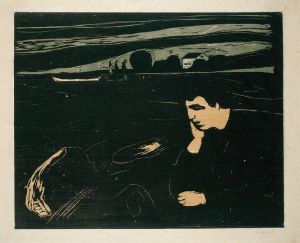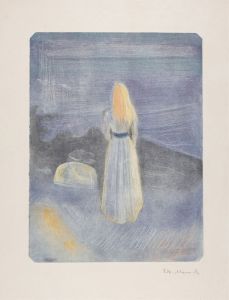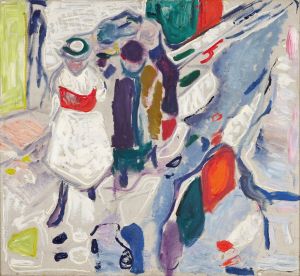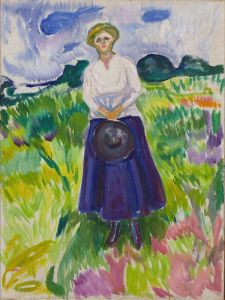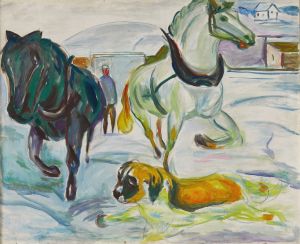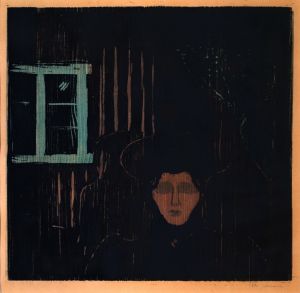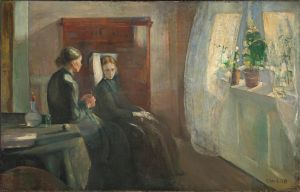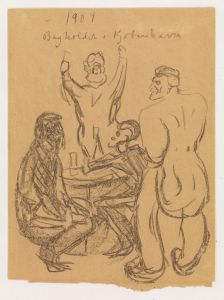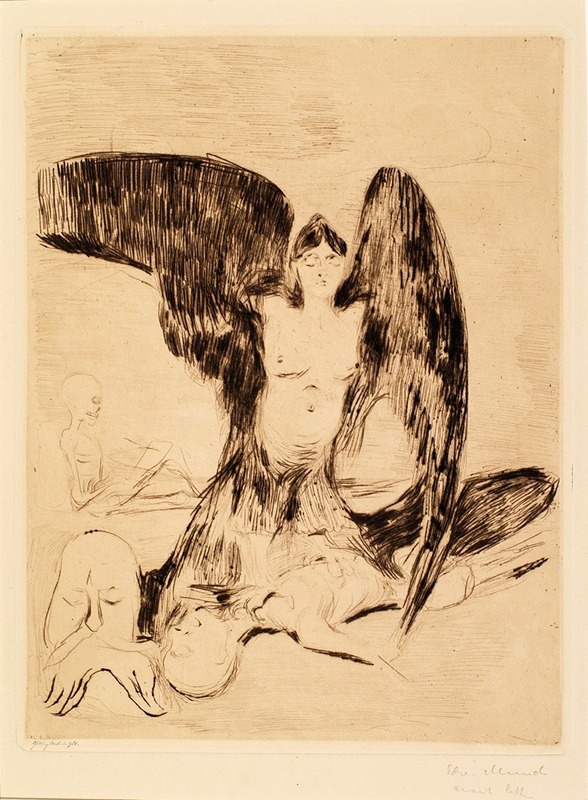
The Vampire
A hand-painted replica of Edvard Munch’s masterpiece The Vampire, meticulously crafted by professional artists to capture the true essence of the original. Each piece is created with museum-quality canvas and rare mineral pigments, carefully painted by experienced artists with delicate brushstrokes and rich, layered colors to perfectly recreate the texture of the original artwork. Unlike machine-printed reproductions, this hand-painted version brings the painting to life, infused with the artist’s emotions and skill in every stroke. Whether for personal collection or home decoration, it instantly elevates the artistic atmosphere of any space.
"The Vampire" is a painting by the Norwegian artist Edvard Munch, created in 1895. This work is part of Munch's larger series known as "The Frieze of Life," which explores themes such as love, anxiety, and death. Munch is renowned for his evocative and emotionally charged style, and "The Vampire" is no exception, capturing a moment of intimate yet unsettling interaction between two figures.
The painting depicts a man and a woman locked in an embrace. The woman, with flowing red hair, bends over the man, who rests his head on her shoulder. Her hair cascades down, enveloping him, which contributes to the painting's ambiguous and somewhat ominous atmosphere. The title "The Vampire" suggests a sinister interpretation, where the woman is seen as a vampiric figure, potentially draining the life from the man. However, Munch himself referred to the painting as "Love and Pain," indicating a more nuanced exploration of the complexities of romantic relationships.
Munch's use of color and form in "The Vampire" is characteristic of his style during this period. The dark, muted tones create a somber mood, while the red of the woman's hair stands out vividly, drawing the viewer's attention and adding to the painting's emotional intensity. The brushwork is expressive, contributing to the sense of movement and emotional turmoil.
"The Vampire" was initially met with mixed reactions. Some critics and viewers found the painting disturbing, while others appreciated its emotional depth and the way it challenged traditional representations of love and intimacy. The painting reflects Munch's interest in Symbolism, a movement that sought to express the emotional and psychological aspects of human experience through art.
Edvard Munch was a pivotal figure in the development of modern art, and his work, including "The Vampire," had a significant influence on later movements such as Expressionism. His exploration of psychological themes and his innovative use of color and form helped pave the way for artists who sought to convey the inner workings of the human mind and the complexities of emotional life.
"The Vampire" exists in several versions, as Munch often revisited and reinterpreted his themes. These versions include paintings and prints, each offering slight variations in composition and color. This practice was typical for Munch, who frequently explored the same themes across different media and over extended periods.
Today, "The Vampire" is recognized as an important work within Munch's oeuvre and is appreciated for its ability to evoke complex emotional responses. It continues to be studied and exhibited as a significant example of Munch's contribution to modern art and his exploration of the darker aspects of human experience. The painting is housed in various collections, with one of the most notable versions residing in the Munch Museum in Oslo, Norway, where it remains a subject of interest for both art historians and the general public.





